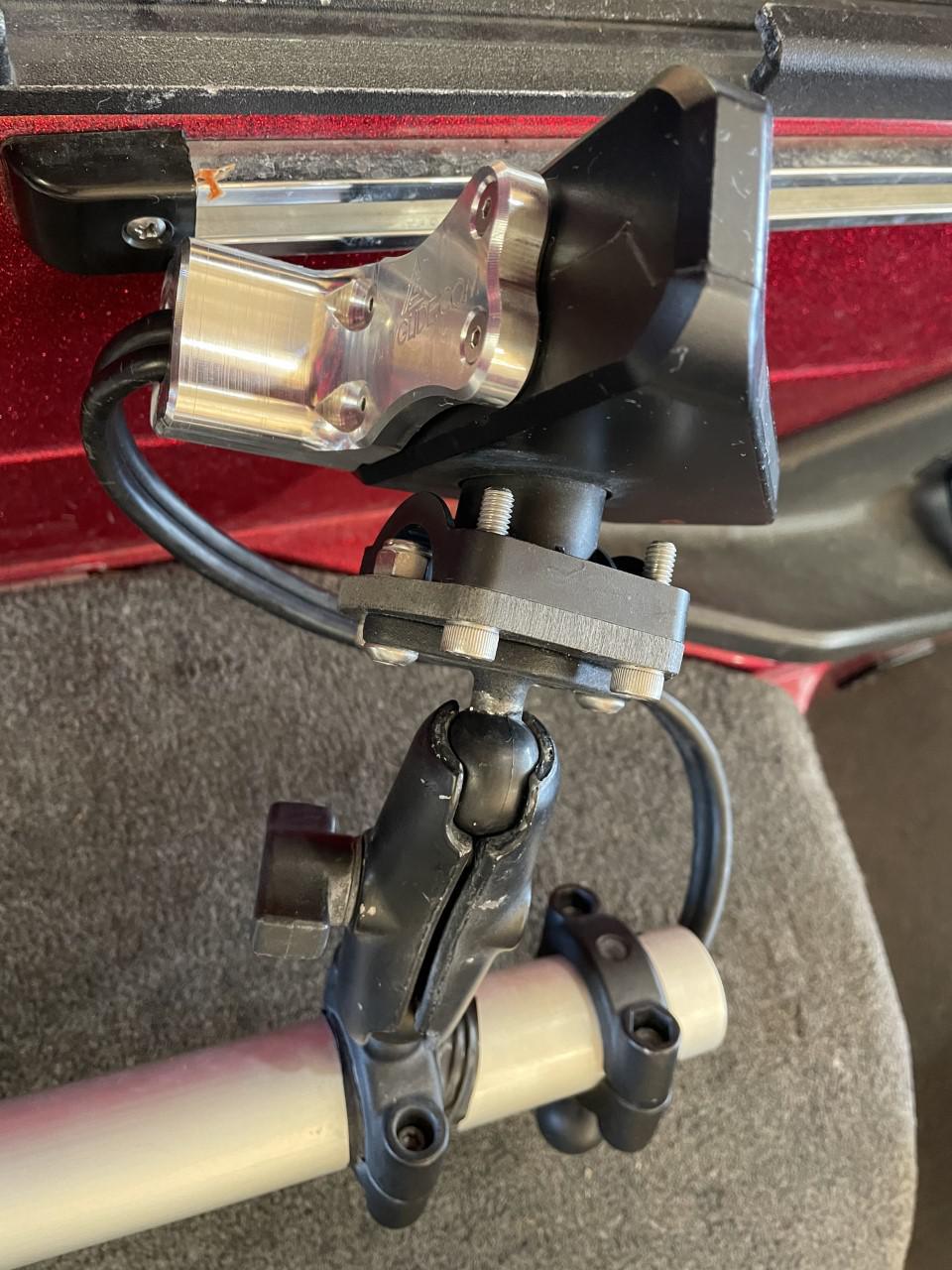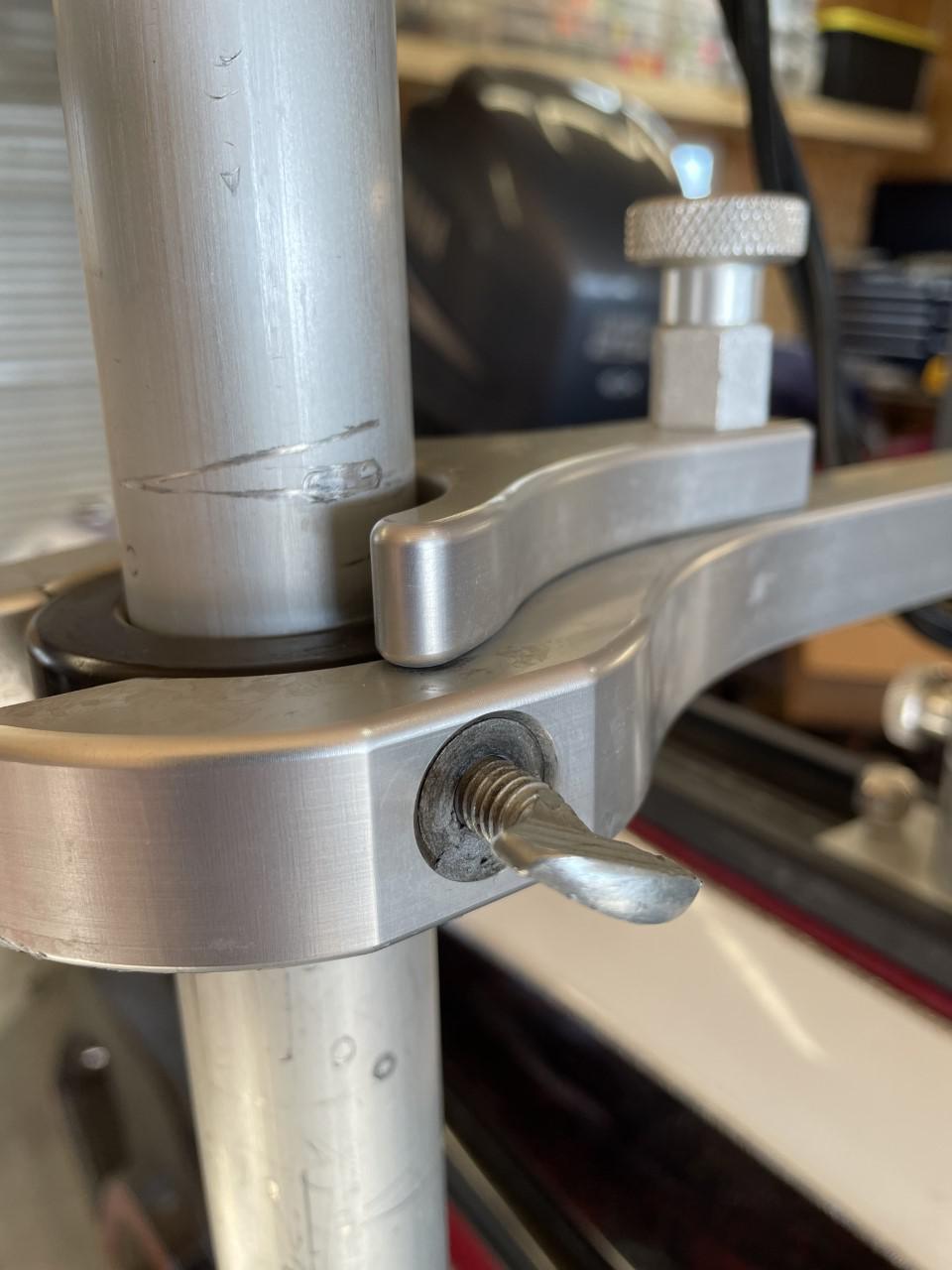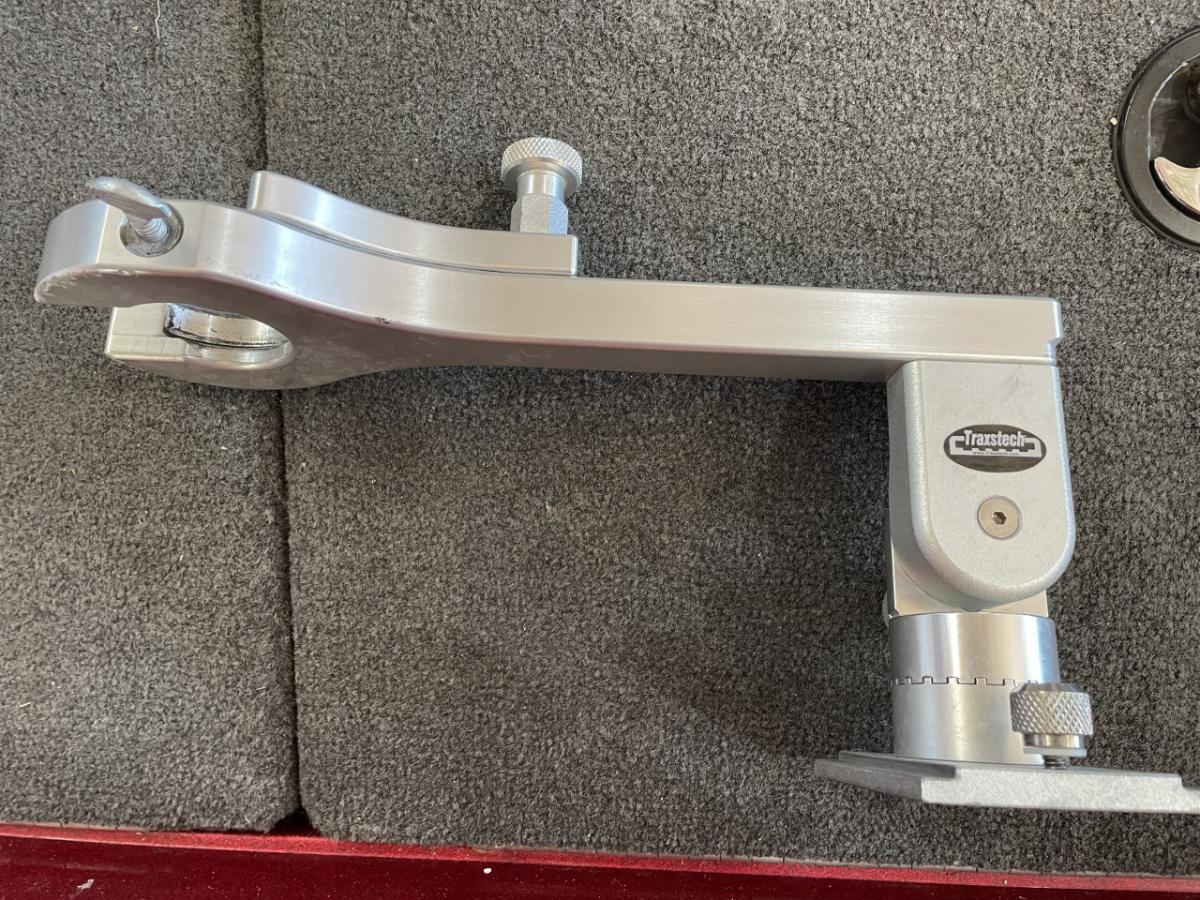Setting Up The Scope
Choosing the correct Livescope transducer pole mount can be confusing with all of the mounts currently on the market today. Many of the pole mounts are geared toward anglers slowly scanning known structure looking for smaller fish such as panfish while keeping a keen eye on their electronics. On the opposite end of the spectrum, muskie anglers are looking for a transient fish that is as comfortable relating to structure as it is cruising open water. Muskies present a large unmistakable return when spotted using a Livescope, which is the reason we are able to move quickly through spots. In this article, I will explain in detail the Traxstech transducer pole mount that I use and how to modify it to fit your needs as a muskie angler. In addition, I will briefly describe my entire Livescope system.
Muskies are without a doubt a low-density fish in the lakes that I guide on in northern Minnesota. It takes time to find a fish especially in large bodies of water or trophy fisheries. The ability to quickly survey structure and eliminate dead areas is crucial to utilizing your time on the water. I value my clients’ time with me and want them to be on fish as soon as possible. I push my Livescope equipment to the breaking point to find fish in a timely manner. Your Livescope set up must be able to take fast searching and trolling speeds of up to eight miles per hour. PVC and homemade plastic set ups are unable to perform under such speed and designed for other applications. My Traxstech arm did walk itself out of the track and managed to take a tumble down the highway after a guide trip last September. It was found that evening by a state trooper friend of mine but not before it was ran over multiple times. I put it back in the tracks and it was working the next day, which is a testament to the strength of the design.
I use a modified Traxstech Transducer Mount with a five-foot pole that is designed to run in a set of Traxstech tracks. Tracks are an ideal foundation due to their ability to distribute the torque over a large area caused by quickly scanning structure with the pole deployed. The sliding arm is made of solid aluminum that holds and locks the collar on the pole. The collar is attached to the pole with setscrews, which occasionally back out resulting in total slippage of the collar. After a season of constantly tightening the setscrews I will be drilling out and tapping the collar to accept larger setscrews with more surface area to grab the pole. I also will be adding another collar to the pole, which will give me the ability to have a deep and a shallow transducer setting simply by deciding which collar to set into the arm.
The plunger-style knob on the side of the arm only allows for 90 degrees of transducer adjustability due to the four holes it grabs on the collar. To allow infinite adjustability of the transducer I had a machinist remove the plunger and install an insert that accepts a simple machine thumbscrew. The business end of the Livescope system is the mount that holds the transducer to the pole. Similar to the Traxstech system the pole to transducer attachment must have strength and adjustability. I use a modified Ram Mount to achieve this. There are companies such as the Geared Beastmode Mount that piece it together or you can do it yourself and save some money. Stay away from the Garmin
Perspective Mount as they lack adjustability and the strength that you need. I use an Any Glide Livescope Cable Saver to prevent cord to transducer separation, which is a known issue from heavy usage.
My boat has 72-inch Traxstech tracks on the port and starboard sides, which is the perfect length for visually watching both anglers’ baits coming to the boat. The long tracks allow me to use the entire length of my Ranger behind the full windshield. In addition, I have one six-inch piece of track located at the bow. The six-inch track in the bow allows me to scan the water in front of the boat. Scanning
in front of the boat allows me to pinpoint a muskie’s location without the boat running on top of or passing by the fish. I would compare this to driving at night and spotting deer in the middle of the road with your headlights. I often use the phrase “road hunting” when describing the procedure of searching for muskies while behind the scope. Tracks placed throughout my boat allow me to move in various locations to precisely locate and stay on fish. Muskies do move especially when engaging them with baits. Mobility to move and anchor your Livescope transducer pole at various locations throughout your boat is essential in tracking muskies.
There are other moving parts to the Livescope system outside of the pole set up that should be mentioned. However, my short time reviewing these items should also indicate their level of importance to me. The screen that I use for viewing is a Garmin Ultra 126sv recessed behind my steering wheel on a Bass Boat Technology mount. I need a large screen close to the wheel that I can use to find muskies with my Livescope while I am road hunting. Since I am a guide a screen near the casting areas of the boat doesn’t make sense. I am constantly adjusting the direction of the pole and instructing my clients where to cast simultaneously eyeing the screen at the wheel as a reference.
The Livescope system paired with a big screen does use a substantial amount of power. I installed a simple on/off kill switch to my Livescope transducer on the dash of my Ranger. This allows me to cut all the power off to the transducer when we are in between spots. My Livescope is powered by an Amped Outdoors 60AH lithium battery, which is more than sufficient to run my current system and another large screen. Another item that is noteworthy to cover in this jumbled paragraph is the trolling motor. A trolling motor that has i-Pilot link gives the ability of precision spot locking capabilities, which enhances the effectiveness of your Livescope system. I run a 60-inch Minn Kota Ulterra 112 that will be entering its fourth season.
In conclusion, there are many ways to run a Livescope system in your boat. The transducer pole set up should be considered as the most important piece of equipment. The pole’s strength and adaptability will ultimately determine the number of fish you contact in a single day.




